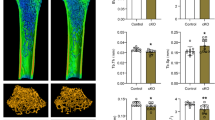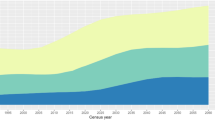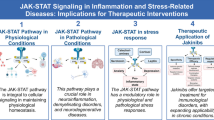Abstract
Osteoarthritis (OA), the most common form of arthritis, is characterized by inflammation of joints and cartilage degradation leading to disability, discomfort, severe pain, inflammation, and stiffness of the joint. It has been shown that adenosine, a purine nucleoside composed of adenine attached to ribofuranose, is enzymatically produced by the human synovium. However, the functional significance of adenosine signaling in homeostasis and pathology of synovial joints remains unclear. Adenosine acts through four cell surface receptors, i.e., A1, A2A, A2B, and A3, and here, we have systematically analyzed mice with a deficiency for A3 receptor as well as pharmacological modulations of this receptor with specific analogs. The data show that adenosine receptor signaling plays an essential role in downregulating catabolic mechanisms resulting in prevention of cartilage degeneration. Ablation of A3 resulted in development of OA in aged mice. Mechanistically, A3 signaling inhibited cellular catabolic processes in chondrocytes including downregulation of Ca2+/calmodulin-dependent protein kinase (CaMKII), an enzyme that promotes matrix degradation and inflammation, as well as Runt-related transcription factor 2 (RUNX2). Additionally, selective A3 agonists protected chondrocytes from cell apoptosis caused by pro-inflammatory cytokines or hypo-osmotic stress. These novel data illuminate the protective role of A3, which is mediated via inhibition of intracellular CaMKII kinase and RUNX2 transcription factor, the two major pro-catabolic regulators in articular cartilage.
Key messages
-
Adenosine receptor A3 (A3) knockout results in progressive loss of articular cartilage in vivo.
-
Ablation of A3 results in activation of matrix degradation and cartilage hypertrophy.
-
A3 agonists downregulate RUNX2 and CaMKII expression in osteoarthritic human articular chondrocytes.
-
A3 prevents articular cartilage matrix degradation induced by inflammation and osmotic fluctuations.
-
A3 agonist inhibits proteolytic activity of cartilage-degrading enzymes.





Similar content being viewed by others
References
Yelin E, Weinstein S, King T (2016) The burden of musculoskeletal diseases in the United States. Semin Arthritis Rheum 46(3):259–260
Muller-Fassbender H, Bach GL, Haase W, Rovati LC, Setnikar I (1994) Glucosamine sulfate compared to ibuprofen in osteoarthritis of the knee. Osteoarthr Cartil 2(1):61–69
Li Y, Ahrens MJ, Wu A, Liu J, Dudley AT (2011) Calcium/calmodulin-dependent protein kinase II activity regulates the proliferative potential of growth plate chondrocytes. Development 138(2):359–370
Liang W, Li X, Gao B, Gan H, Lin X, Liao L et al (2016) Observing the development of the temporomandibular joint in embryonic and post-natal mice using various staining methods. Exp Ther Med 11(2):481–489
Dreier R (2010) Hypertrophic differentiation of chondrocytes in osteoarthritis: the developmental aspect of degenerative joint disorders. Arthritis Res Ther 12(5):216
Liao L, Zhang S, Gu J, Takarada T, Yoneda Y, Huang J, Zhao L, Oh CD, Li J, Wang B, Wang M, Chen D (2017) Deletion of Runx2 in articular chondrocytes decelerates the progression of DMM-induced osteoarthritis in adult mice. Sci Rep 7:2371
Cohen-Solal KA, Boregowda RK, Lasfar A (2015) RUNX2 and the PI3K/AKT axis reciprocal activation as a driving force for tumor progression. Mol Cancer 14(1):137
Fernández P, Perez-Aso M, Smith G, Wilder T, Trzaska S, Chiriboga L, Franks A Jr, Robson SC, Cronstein BN, Chan ESL (2013) Extracellular generation of adenosine by the ectonucleotidases CD39 and CD73 promotes dermal fibrosis. Am J Pathol 183(6):1740–1746
Gullo F, De Bari C (2013) Prospective purification of a subpopulation of human synovial mesenchymal stem cells with enhanced chondro-osteogenic potency. Rheumatology (Oxford) 52(10):1758–1768
Tesch AM, MacDonald MH, Kollias-Baker C, Benton HP (2004) Endogenously produced adenosine regulates articular cartilage matrix homeostasis: enzymatic depletion of adenosine stimulates matrix degradation. Osteoarthr Cartil 12(5):349–359
Corciulo C, Lendhey M, Wilder T, Schoen H, Cornelissen AS, Chang G, Kennedy OD, Cronstein BN (2017) Endogenous adenosine maintains cartilage homeostasis and exogenous adenosine inhibits osteoarthritis progression. Nat Commun 8:15019
Chen JF, Eltzschig HK, Fredholm BB (2013) Adenosine receptors as drug targets—what are the challenges? Nat Rev Drug Discov 12(4):265–286
Daly JW, Padgett WL (1992) Agonist activity of 2- and 5′-substituted adenosine analogs and their N6-cycloalkyl derivatives at A1- and A2-adenosine receptors coupled to adenylate cyclase. Biochem Pharmacol 43(5):1089–1093
Fishman P, Bar-Yehuda S, Liang BT, Jacobson KA (2012) Pharmacological and therapeutic effects of A3 adenosine receptor agonists. Drug Discov Today 17(7–8):359–366
Bar-Yehuda S, Stemmer SM, Madi L, Castel D, Ochaion A, Cohen S, Barer F, Zabutti A, Perez-Liz G, del Valle L, Fishman P (2008) The A3 adenosine receptor agonist CF102 induces apoptosis of hepatocellular carcinoma via de-regulation of the Wnt and NF-kappaB signal transduction pathways. Int J Oncol 33(2):287–295
Fishman P, Bar-Yehuda S, Ardon E, Rath-Wolfson L, Barrer F, Ochaion A, Madi L (2003) Targeting the A3 adenosine receptor for cancer therapy: inhibition of prostate carcinoma cell growth by A3AR agonist. Anticancer Res 23(3A):2077–2083
Bar-Yehuda S, Madi L, Barak D, Mittelman M, Ardon E, Ochaion A, Cohn S, Fishman P (2002) Agonists to the A3 adenosine receptor induce G-CSF production via NF-kappaB activation: a new class of myeloprotective agents. Exp Hematol 30(12):1390–1398
Avni I, Garzozi HJ, Barequet IS, Segev F, Varssano D, Sartani G, Chetrit N, Bakshi E, Zadok D, Tomkins O, Litvin G, Jacobson KA, Fishman S, Harpaz Z, Farbstein M, Yehuda SB, Silverman MH, Kerns WD, Bristol DR, Cohn I, Fishman P (2010) Treatment of dry eye syndrome with orally administered CF101: data from a phase 2 clinical trial. Ophthalmology 117(7):1287–1293
Silverman MH, Strand V, Markovits D, Nahir M, Reitblat T, Molad Y, Rosner I, Rozenbaum M, Mader R, Adawi M, Caspi D, Tishler M, Langevitz P, Rubinow A, Friedman J, Green L, Tanay A, Ochaion A, Cohen S, Kerns WD, Cohn I, Fishman-Furman S, Farbstein M, Yehuda SB, Fishman P (2008) Clinical evidence for utilization of the A3 adenosine receptor as a target to treat rheumatoid arthritis: data from a phase II clinical trial. J Rheumatol 35(1):41–48
Bar-Yehuda S, Rath-Wolfson L, Del Valle L, Ochaion A, Cohen S, Patoka R et al (2009) Induction of an antiinflammatory effect and prevention of cartilage damage in rat knee osteoarthritis by CF101 treatment. Arthritis Rheum 60(10):3061–3071
Gallo-Rodriguez C, Ji XD, Melman N, Siegman BD, Sanders LH, Orlina J, Fischer B, Pu Q, Olah ME, van Galen P (1994) Structure-activity relationships of N6-benzyladenosine-5′-uronamides as A3-selective adenosine agonists. J Med Chem 37(5):636–646
Klotz KN (2000) Adenosine receptors and their ligands. Naunyn Schmiedeberg's Arch Pharmacol 362(4–5):382–391
Halldner L, Ådén U, Dahlberg V, Johansson B, Ledent C, Fredholm BB (2004) The adenosine A1 receptor contributes to the stimulatory, but not the inhibitory effect of caffeine on locomotion: a study in mice lacking adenosine A1 and/or A2A receptors. Neuropharmacology 46(7):1008–1017
Peleli M, Hezel M, Zollbrecht C, Persson AEG, Lundberg JO, Weitzberg E et al (2015) In adenosine A(2B) knockouts acute treatment with inorganic nitrate improves glucose disposal, oxidative stress, and AMPK signaling in the liver. Front Physiol 6:222
Yang T, Gao X, Sandberg M, Zollbrecht C, Zhang X-M, Hezel M, Liu M, Peleli M, Lai EY, Harris RA, Persson AEG, Fredholm BB, Jansson L, Carlström M (2015) Abrogation of adenosine A1 receptor signalling improves metabolic regulation in mice by modulating oxidative stress and inflammatory responses. Diabetologia 58(7):1610–1620
Yang T, Zollbrecht C, Winerdal ME, Zhuge Z, Zhang XM, Terrando N, Checa A, Sällström J, Wheelock CE, Winqvist O, Harris RA, Larsson E, Persson AEG, Fredholm BB, Carlström M (2016) Genetic abrogation of adenosine A(3) receptor prevents uninephrectomy and high salt–induced hypertension. J Am Heart Assoc: Cardiovascular and Cerebrovascular Disease 5(7):e003868
Wang M, Sampson ER, Jin H, Li J, Ke QH, Im H-J et al (2013) MMP13 is a critical target gene during the progression of osteoarthritis. Arthritis Res Ther 15(1):R5 -R
Tortorella MD, Malfait AM, Deccico C, Arner E (2001) The role of ADAM-TS4 (aggrecanase-1) and ADAM-TS5 (aggrecanase-2) in a model of cartilage degradation. Osteoarthr Cartil 9(6):539–552
Quinn C. Parathyroid hormone induces rat interstitial collagenase mRNA through Ets-1 facilitated by cyclic AMP response element-binding protein and Ca(2+)/calmodulin-dependent protein kinase II in osteoblastic cells 2000. 73–84
Wang X, Manner PA, Horner A, Shum L, Tuan RS, Nuckolls GH (2004) Regulation of MMP-13 expression by RUNX2 and FGF2 in osteoarthritic cartilage. Osteoarthr Cartil 12(12):963–973
Wojdasiewicz P, Poniatowski LA, Szukiewicz D (2014) The role of inflammatory and anti-inflammatory cytokines in the pathogenesis of osteoarthritis. Mediat Inflamm 2014:561459
Sugita S, Hosaka Y, Okada K, Mori D, Yano F, Kobayashi H, Taniguchi Y, Mori Y, Okuma T, Chang SH, Kawata M, Taketomi S, Chikuda H, Akiyama H, Kageyama R, Chung UI, Tanaka S, Kawaguchi H, Ohba S, Saito T (2015) Transcription factor Hes1 modulates osteoarthritis development in cooperation with calcium/calmodulin-dependent protein kinase 2. Proc Natl Acad Sci U S A 112(10):3080–3085
Tosh DK, Padia J, Salvemini D, Jacobson KA (2015) Efficient, large-scale synthesis and preclinical studies of MRS5698, a highly selective A3 adenosine receptor agonist that protects against chronic neuropathic pain. Purinergic Signal 11(3):371–387
Grunke M, Schulze-Koops H (2006) Successful treatment of inflammatory knee osteoarthritis with tumour necrosis factor blockade. Ann Rheum Dis 65(4):555–556
Urban JPG, Hall AC, Gehl KA (1993) Regulation of matrix synthesis rates by the ionic and osmotic environment of articular chondrocytes. J Cell Physiol 154(2):262–270
Sanchez JC, Danks TA, Wilkins RJ (2003) Mechanisms involved in the increase in intracellular calcium following hypotonic shock in bovine articular chondrocytes. Gen Physiol Biophys 22(4):487–500
Brocker C, Thompson DC, Vasiliou V (2012) The role of hyperosmotic stress in inflammation and disease. Biomol Concepts 3(4):345–364
Busa WB (1996) Regulation of intracellular free calcium. In: Schultz SG, Andreoli TE, Brown AM, Fambrough DM, Hoffman JF, Welsh MJ (eds) Molecular biology of membrane transport disorders. Springer US, Boston, MA, pp 427–446
Martini WZ, Cortez DS, Dubick MA (2013) Comparisons of normal saline and lactated Ringer’s resuscitation on hemodynamics, metabolic responses, and coagulation in pigs after severe hemorrhagic shock. Scand J Trauma Resusc Emerg Med 21:86
Rebouissou S, Amessou M, Couchy G, Poussin K, Imbeaud S, Pilati C, Izard T, Balabaud C, Bioulac-Sage P, Zucman-Rossi J (2009) Frequent in-frame somatic deletions activate gp130 in inflammatory hepatocellular tumours. Nature 457(7226):200–204
Rath-Wolfson L, Bar-Yehuda S, Madi L, Ochaion A, Cohen S, Zabutti A, Fishman P (2006) IB-MECA, an A3 adenosine receptor agonist prevents bone resorption in rats with adjuvant induced arthritis. Clin Exp Rheumatol 24(4):400–406
Strazzulla LC, Cronstein BN (2016) Regulation of bone and cartilage by adenosine signaling. Purinergic Signalling 12(4):583–593
Panjehpour M, Karami-Tehrani F (2007) Adenosine modulates cell growth in the human breast cancer cells via adenosine receptors. Oncol Res 16(12):575–585
Rivo J, Zeira E, Galun E, Matot I (2004) Activation of A3 adenosine receptor provides lung protection against ischemia-reperfusion injury associated with reduction in apoptosis. Am J Transplant 4(12):1941–1948
Funding
This work is supported by NIH grant R01AR071734, DOD grant W81XWH-13-1-0465, and CIRM grant TRAN1-09288, all to DE. This work was also supported by grants from the Swedish Heart and Lung Foundation (Dnr: 20170124 & 20140448, M.C.), the Swedish Research Council (Dnr: 2016-01381 to M.C. and Dnr. 2016-02835 to ASC), and by KID-funding from the Karolinska Institutet (Dnr 2415/2012-225 and Dnr 2-3707/2013, M.C.).
Author information
Authors and Affiliations
Contributions
RS, SL, FG, KLL, NWB, SL, NQL, MC, ASC and MP conducted experiments. MC provided the A3 KO mice and corresponding WT. RS and DE designed experiments. RS and DE analyzed data. RS, MC, ASC, and DE provided conceptual insight. RS and DE wrote the manuscript. All authors reviewed and revised the manuscript.
Corresponding author
Ethics declarations
The experiments were approved by the institutional review board (the Stockholm Ethical Committee for Animal Experiments; Protocols: N139/15 & N314/12) and were conducted in accordance with the National Institutes of Health guidelines for the conduct of experiments in animals.
Conflict of interest
The authors declare that they have no conflict of interest.
Rights and permissions
About this article
Cite this article
Shkhyan, R., Lee, S., Gullo, F. et al. Genetic ablation of adenosine receptor A3 results in articular cartilage degeneration. J Mol Med 96, 1049–1060 (2018). https://doi.org/10.1007/s00109-018-1680-3
Received:
Revised:
Accepted:
Published:
Issue Date:
DOI: https://doi.org/10.1007/s00109-018-1680-3




